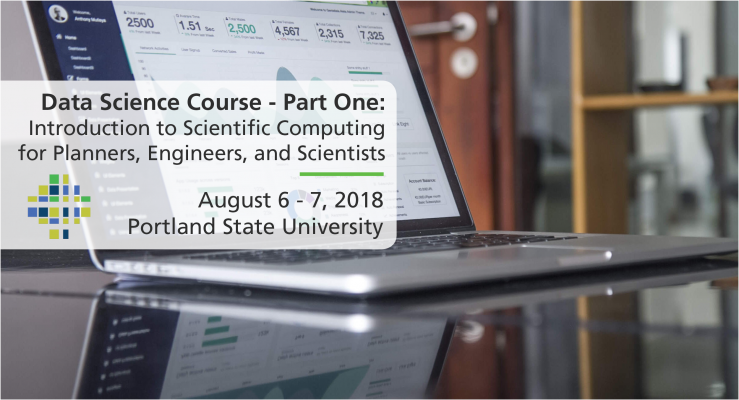SEMINAR VIDEO
SEMINAR SLIDES
Missed the presentation or want to look back at the slides? View the slides here.
Travel times, operating speeds, and service reliability influence costs and service attractiveness. This research outlines an approach...
Read moreWatch video
View slides
Summary: Linking planning and operations is vital to improving transportation decision making and the overall effectiveness of transportation systems. In this seminar Steve will discuss data and modeling methods supported by the PTV Vision software suite to facilitate integrated planning for operations.
Bio: PSU Alum Steve Perone is the President of PTV America, Inc. the North American subsidiary of German software provider PTV Group. Headquartered in Portland, Oregon he is responsible for supporting a diverse customer base of traffic engineers and transportation planners from over 1,000 public agencies, universities and consulting firms combined. His experience draws on time spent in roles as both a public sector employee and as a private consultant supporting public agencies. In his role he actively supports many ITE and TRB events and programs.
The video begins at 2:00.
View slides
Abstract: Urban arterials often represent complex venues of transportation operations, co-mingling non-motorized users with transit services and a wide variety of land uses and traffic patterns. This presentation presents results related to the evaluation of a new Adaptive Traffic Control System (SCATS) on Powell Boulevard in southeast Portland. The presentation will discuss challenges and opportunities associated with the evaluation of new technologies and the development of comprehensive urban arterial performance measures.
Speaker Bio: Miguel Figliozzi is an Associate Professor of Civil and Environmental Engineering at Portland State University. His diverse research interests include transit and traffic operations, bicycle and pedestrian modes, emissions and air quality modeling, and freight and logistics. He holds a MS from the University of Texas at Austin and a PhD from the University of Maryland College Park. Figliozzi is a member of the Transportation Research Board Network Modeling Committee, Freight and Logistics, and Intermodal Terminal Design Committees. Papers, reports, and more detailed information available at Figliozzi's webpage: http://web.cecs.pdx.edu/~maf/
The video begins at 0:39.
View slides
Summary: This presentation is a showcase of various GIS tools developed for bicycle network analysis and planning. The showcase includes a tool for assessing community-wide bikeability, a tool for forecasting bicycle volumes based on street topology, and a tool for evaluating different bicycle improvement plans in terms of exposure to danger situations for bicyclists. The tools will be demonstrated with case study data. The presentation will include a review of the Highway Capacity Manual Bicycle Level of Service and a discussion about using bicycle and pedestrian data collected through citizen-volunteer count programs.
Bio: Dr. Michael Lowry holds a joint appointment in Civil Engineering and Bioregional Planning at the University of Idaho. He is an affiliate researcher for the National Institute for Advanced Transportation Technology. His research focuses on capital investment decision-making and transportation planning for bicyclists and pedestrians. Dr. Lowry teaches courses related to sustainable transportation, engineering statistics, and economic analysis. He received his PhD in Civil and Environmental Engineering from the University of Washington and BS and MS from Brigham Young University.
The video begins at 2:51.
Adam Moore: Bus Stop Air Quality: An Empirical Analysis of Exposure to Particulate Matter at Bus Stop Shelters
Congested traffic corridors in dense urban areas are key contributors to the degradation of urban air quality. While waiting at bus stops, transit patrons may be exposed to greater amounts of vehicle-based pollution, including particulate matter, due to their proximity to the roadway. Current guidelines for the location and design of bus stops do not take into account air quality or exposure considerations. This study compares the exposure of transit riders waiting at three-sided bus stop shelters that either: 1) face the roadway traffic or 2) face away from the roadway traffic. Shelters were instrumented with air quality monitoring equipment, sonic anemometers, and vehicle counters. Data were collected for two days at three shelters during both the morning and afternoon peak periods. Bus shelter orientation is found to significantly affect concentration of four sizes of particulate matter: ultrafine particles, PM1, PM2.5, and PM10. Shelters with an opening oriented towards the roadway were consistently observed to have higher concentrations inside the shelter than outside the shelter. In contrast, shelters oriented away from the roadway were observed to have lower concentrations inside the shelter than outside the shelter. The differences in particulate matter...
Read moreThis summer we're hosting a two-part data science course. You can register for one or the other– or attend both parts at a discount: Data Science Course 2018, Part 2: Intermediate/Advanced Scientific Computing for Planners, Engineers, and Scientists.
----
Did you ever feel you are “drinking from a hose” with the amount of data you are attempting to analyze? Have you been frustrated with the tedious steps in your data processing and analysis process and thinking, “There’s gotta be a better way to do things”? Are you curious what the buzz of data science is about? If any of your answers are yes, then this course is for you.
Classes will all be hands-on sessions with lecture, discussions and labs. Participants can choose to sign up for one or both courses. For more information, ...
Read more
